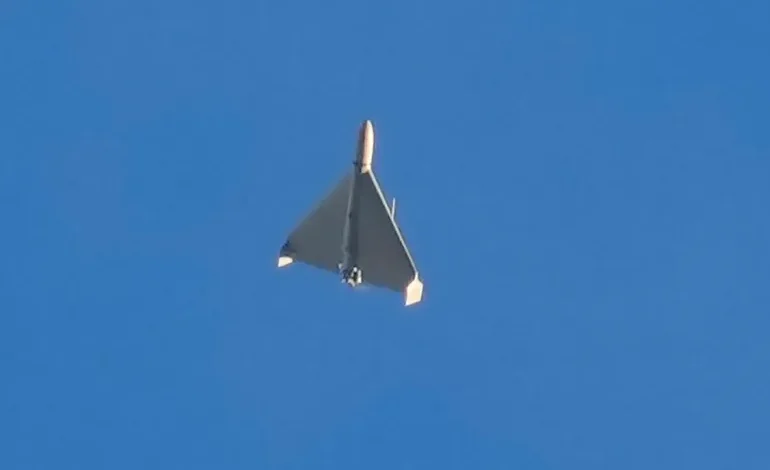Are killer robots the future of war?

Humanity stands on the brink of a new era of warfare.
Driven by rapid developments in artificial intelligence, weapons platforms that can identify, target and decide to kill human beings on their own — without an officer directing an attack or a soldier pulling the trigger — are fast transforming the future of conflict.Officially, they are called lethal autonomous weapons systems (LAWS), but critics call them killer robots. Many countries, including the United States, China, the United Kingdom, India, Iran, Israel, South Korea, Russia and Turkey, have invested heavily in developing such weapons in recent years.
A United Nations report suggests that Turkish-made Kargu-2 drones in fully-automatic mode marked the dawn of this new age when they attacked combatants in Libya in 2020 amid that country’s ongoing conflict.
Autonomous drones have also played a crucial role in the war in Ukraine, where both Moscow and Kyiv have deployed these uncrewed weapons to target enemy soldiers and infrastructure.
The emergence and deployment of such machines are driving intense debates among experts, activists and diplomats worldwide as they grapple with the possible benefits and potential risks of using robots, and consider whether and how to stop them.
Yet in an increasingly divided geopolitical landscape, can the international community arrive at any consensus on these machines? Do the ethical, legal and technological threats posed by such weapons make it essential to stop them before they take over the battlefield? Is a blanket ban feasible, or is a set of regulations a more realistic option? Al Jazeera posed these questions to leading experts in the field.
The short answer: An outright blanket ban on autonomous weapon systems does not look likely anytime soon. However, a growing chorus of voices — especially from the Global South — is calling for their regulation, and experts believe a global taboo of the kind that is in place against the use of chemical weapons is possible. Major military powers may be intrigued by the potential battlefield advantages such systems could give them, but there seems to be little appetite for them outside governments and generals.
‘Cannot unwind World War III’
In late March, Yasmin Afina, research associate at the London-based Chatham House, described to the House of Lords, the second chamber of the UK parliament, how the US National Security Agency (NSA) had once mistakenly identified an Al Jazeera journalist as an al-Qaeda courier. That labelling — which also resulted in the journalist being put on a US watch list — only came to light through documents leaked in 2013 by Edward Snowden, a former contractor with the NSA.
A surveillance system of the kind behind that incident is not in itself “a weapon system, but it is lethality-enabling,” Afina said in her deposition. “If you were to engage the target, the journalist, that would absolutely be against international humanitarian law considerations.”The potential for LAWS to trigger a chain reaction of escalatory events worries Toby Walsh, an AI expert at the University of New South Wales in Sydney, Australia.
“We know what happens when we put complex computer systems against each other in an uncertain and competitive environment. It’s called the stock market,” wrote Walsh in written evidence submitted to the House of Lords.
“The only way to stop dangerous feedback loops and undesirable outcomes is to use ‘circuit breakers’. On the stock market, we can simply unwind transactions when such a situation occurs. But we cannot unwind the start of WW3”, he added.
That does not mean researchers should stop developing the technology behind automatic weapons systems, Walsh told Al Jazeera. That technology, he said, could bring benefits in other fields.
For example, the same algorithms used in car safety systems that avoid collisions with pedestrians will “be the algorithms that go into your autonomous drone that identify combatants, track them — and it’s just a sign change to kill them as opposed to avoid them”, he said. It would be “morally wrong to deny the world” a chance to reduce road deaths, he argued.
Instead, the answer might lie in emulating the “relatively successful regulation of chemical weapons,” Walsh said.
When chemical weapons are used, they make front-page headlines and trigger a global outcry. The UN’s Chemical Weapons Convention prohibits their development, production, stockpiling and use. That, combined with international taboos around chemical weapons, has also successfully stopped major arms companies from producing them.Gains and risks
To be sure, AI-driven autonomous weapons systems have their benefits from a military perspective.
They could carry out some battlefield tasks without the use of soldiers thus reducing the risk of casualties. Supporters argue that sophisticated technology embedded in these systems could eliminate or reduce human error in decision-making and eliminate biases. Greater accuracy in targeting could, at least in theory, reduce accidental human casualties.
Autonomous weapons systems can also be deployed for defensive capabilities, with lightning-fast detection algorithms able to detect and eliminate a potential threat with greater efficiency and accuracy than humans.
Yet to many experts and rights groups, the risks of these LAWs outweigh any potential advantages — ranging from the possibility of technical malfunctions with no oversight to violations of international law and the ethical concerns over emotionless machines making decisions of life and death.
Central to all of those concerns is the question of accountability.In 2019, the 126 counties party to the United Nations Convention on Certain Conventional Weapons (CCW) agreed upon 11 guiding principles recommended by a group of experts appointed by the UN to address concerns about autonomous weapons.
Among those principles was a decision that international humanitarian law would fully apply to the potential development of such weapons. But experts say it is unclear how that principle will be applied in the fog of war. If a robot commits a war crime, for instance, would it be the commanding officer in charge of the theatre of conflict who would be considered responsible? Or would the buck stop at higher-ups who decided to deploy the machine in the first place? Would the manufacturer of the weapon be liable?
All of this “represents a major gap in policy conversation” on the subject, Stockholm International Peace Research Institute (SIPRI) researchers Vincent Boulanin and Marta Bo wrote in an article in March.
There is not even an “official or internationally agreed definition” for autonomous weapons systems, Boulanin told Al Jazeera, though most countries agree that “the critical element is that the system will be able to identify, select and engage the target without human intervention”.
According to Boulanin, the director of the Governance of Artificial Intelligence Programme at SIPRI, weapons systems already operational today fit this description. One such example is the US-made MIM-104 Patriot surface-to-air missile system currently used by many countries, including Saudi Arabia and Israel.
“We are talking about a capability, a function that can be used across very different types of weapons systems, that can come in all shapes and forms and can be used in very different types of missions,” said Boulanin.
“So if you were to ban something,” he explained, “you would have to narrow down exactly the type of weapon or scenario that you find particularly problematic.”
Rather than a blanket ban, a two-tier set of regulations would be a more realistic outcome, he said, with some weapons systems prohibited and others allowed if they meet a strict set of requirements.
“The million dollar question now is, basically, what are the elements that would fit into these two buckets?” Boulanin said.
It is a question that different states have yet to agree on.










